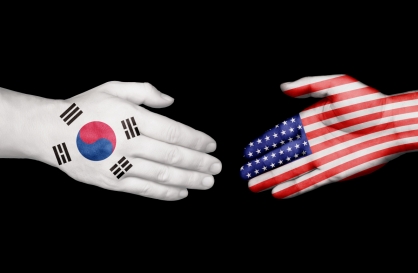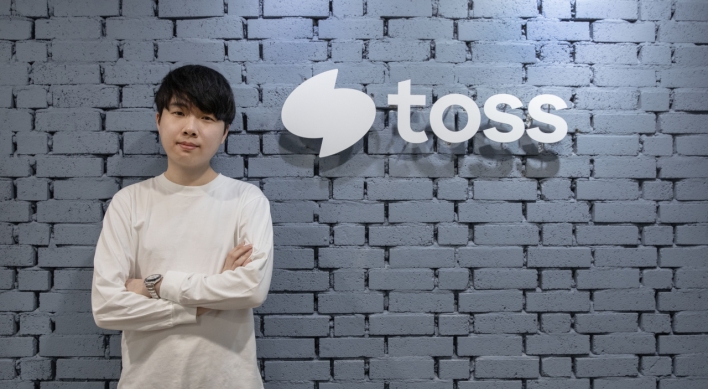[Editorial] Made in Korea?
N.K. should do more than replicating South’s label
By Korea HeraldPublished : March 12, 2015 - 19:31
North Korea reportedly took a rare measure early this year to promote its uniformity with South Korea ― in the English notation of the country of origin for its exports.
According to a report this week by Radio Free Asia, a U.S.-based nonprofit corporation, North Korean authorities issued a directive on Jan. 8 to change the notation from “Made in DPRK” to “Made in Korea.” DPRK stands for the North’s official name ― the Democratic People’s Republic of Korea.
The communist regime has adhered to DPRK as its English name to differentiate itself from South Korea, which is referred to as the Republic of Korea or simply as Korea on the international stage. “DPR of Korea” was printed on the country of origin label on North Korean goods displayed at an international trade fair in the North last August.
Quoting sources in the country’s border regions, the RFA report said the directive was aimed at helping ease growing difficulties in selling North Korean products abroad.
The North’s brazenness is nothing new. But the measure to replicate the country of origin label used for competitive South Korean exports may be a clear indication that it is struggling with a shortage of hard currency that is essential for its young ruler Kim Jong-un to keep his grip on power.
North Korea’s coal exports to China, its main source of income, decreased more than 17 percent from $1.38 billion in 2013 to $1.13 billion last year. Its revenues from illegal transactions in weaponry and drugs have dwindled due to strengthened international sanctions.
Experts here note that the need to fill Kim’s secret coffers was behind the North’s unilateral decision last month to raise the minimum wage for its workers in an inter-Korean industrial complex.
From an economic viewpoint, it is doubtful that simply changing the label for low-quality goods produced in the North will increase their sales overseas. Probably, foreign consumers may not distinguish between products imported from the South and the North under the same “Made in Korea” label. But it may be naive to expect North Korean goods to begin selling like hot cakes in overseas markets just because they no longer carry the DPRK label.
What is worrying is that Pyongyang’s move may only undermine the hard-won reputation of South Korean products and bring losses to their exporters. This concern has already been expressed by some South Korean businesses, including manufacturers that operate at the joint factory park in Gaeseong north of the inter-Korean border.
Given Pyongyang’s past behavior of ignoring global standards, it is likely to turn a deaf ear to any request by Seoul to stop replicating the “Made in Korea” label. What Pyongyang should do to sell more goods abroad, however, is to advance its industrial sectors and improve its reputation by complying with international obligations.
In a paradoxical sense, Kim showed some practicality by adopting the country of origin label used by the South. It may be too much to interpret the measure as hinting at his potential to become more flexible and practical to change the course of his impoverished state. But this hope may not have to necessarily be ditched. After all, it will remain the eventual goal of all Koreans that all goods produced on the unified peninsula are exported with the “Made in Korea” label ― in its true meaning ― attached.
According to a report this week by Radio Free Asia, a U.S.-based nonprofit corporation, North Korean authorities issued a directive on Jan. 8 to change the notation from “Made in DPRK” to “Made in Korea.” DPRK stands for the North’s official name ― the Democratic People’s Republic of Korea.
The communist regime has adhered to DPRK as its English name to differentiate itself from South Korea, which is referred to as the Republic of Korea or simply as Korea on the international stage. “DPR of Korea” was printed on the country of origin label on North Korean goods displayed at an international trade fair in the North last August.
Quoting sources in the country’s border regions, the RFA report said the directive was aimed at helping ease growing difficulties in selling North Korean products abroad.
The North’s brazenness is nothing new. But the measure to replicate the country of origin label used for competitive South Korean exports may be a clear indication that it is struggling with a shortage of hard currency that is essential for its young ruler Kim Jong-un to keep his grip on power.
North Korea’s coal exports to China, its main source of income, decreased more than 17 percent from $1.38 billion in 2013 to $1.13 billion last year. Its revenues from illegal transactions in weaponry and drugs have dwindled due to strengthened international sanctions.
Experts here note that the need to fill Kim’s secret coffers was behind the North’s unilateral decision last month to raise the minimum wage for its workers in an inter-Korean industrial complex.
From an economic viewpoint, it is doubtful that simply changing the label for low-quality goods produced in the North will increase their sales overseas. Probably, foreign consumers may not distinguish between products imported from the South and the North under the same “Made in Korea” label. But it may be naive to expect North Korean goods to begin selling like hot cakes in overseas markets just because they no longer carry the DPRK label.
What is worrying is that Pyongyang’s move may only undermine the hard-won reputation of South Korean products and bring losses to their exporters. This concern has already been expressed by some South Korean businesses, including manufacturers that operate at the joint factory park in Gaeseong north of the inter-Korean border.
Given Pyongyang’s past behavior of ignoring global standards, it is likely to turn a deaf ear to any request by Seoul to stop replicating the “Made in Korea” label. What Pyongyang should do to sell more goods abroad, however, is to advance its industrial sectors and improve its reputation by complying with international obligations.
In a paradoxical sense, Kim showed some practicality by adopting the country of origin label used by the South. It may be too much to interpret the measure as hinting at his potential to become more flexible and practical to change the course of his impoverished state. But this hope may not have to necessarily be ditched. After all, it will remain the eventual goal of all Koreans that all goods produced on the unified peninsula are exported with the “Made in Korea” label ― in its true meaning ― attached.
-
Articles by Korea Herald



![[AtoZ into Korean mind] Humor in Korea: Navigating the line between what's funny and not](http://res.heraldm.com/phpwas/restmb_idxmake.php?idx=644&simg=/content/image/2024/04/22/20240422050642_0.jpg&u=)


![[Herald Interview] Why Toss invited hackers to penetrate its system](http://res.heraldm.com/phpwas/restmb_idxmake.php?idx=644&simg=/content/image/2024/04/22/20240422050569_0.jpg&u=20240422150649)

![[Graphic News] 77% of young Koreans still financially dependent](http://res.heraldm.com/phpwas/restmb_idxmake.php?idx=644&simg=/content/image/2024/04/22/20240422050762_0.gif&u=)







![[Exclusive] Korean military to ban iPhones over security issues](http://res.heraldm.com/phpwas/restmb_idxmake.php?idx=652&simg=/content/image/2024/04/23/20240423050599_0.jpg&u=20240423171347)



![[Today’s K-pop] Ateez confirms US tour details](http://res.heraldm.com/phpwas/restmb_idxmake.php?idx=642&simg=/content/image/2024/04/23/20240423050700_0.jpg&u=)